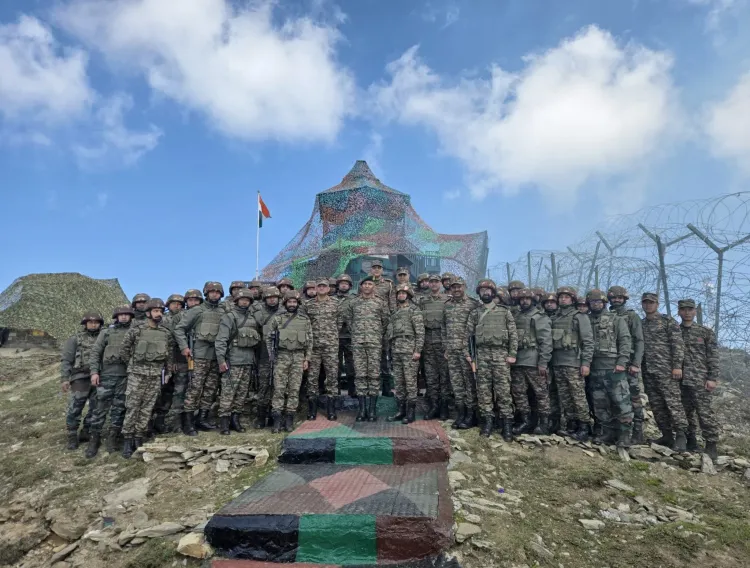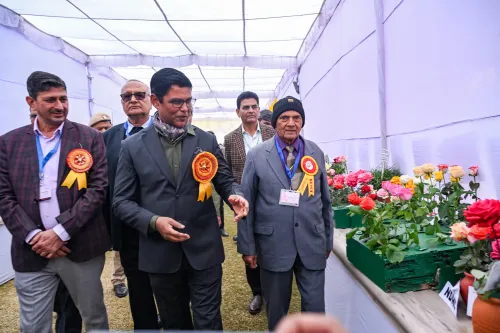What Did the Northern Army Commander Discover During His Visit to Forward Areas?

Synopsis
Key Takeaways
- Northern Army Commander’s Visit to assess security along LoC.
- Rising Tensions following the killing of civilians.
- Increased Vigilance urged among military ranks.
- Ceasefire Agreement reached, contingent on Pakistan's actions.
- Impact on Civilians due to border conflict and shelling.
Jammu, May 20 (NationPress) The Northern Army commander, Lt General Pratik Sharma, conducted a visit on Tuesday to the forward areas situated along the Line of Control (LoC) to evaluate the current security situation.
The Army’s Udhampur headquartered northern command announced on X: “Lt Gen Pratik Sharma, Army Commander, #NorthernCommand, visited forward areas to evaluate the ongoing security conditions, active counter-terrorist operations, and training programs. During his visit, he received briefings on ground-level deployments, threat evaluations, and tactical hurdles.”
The commander expressed his appreciation for the dedication, professionalism, and resilience of personnel operating under strenuous conditions and encouraged them to uphold a heightened state of vigilance given the current security environment.
Joint forces, consisting of the army, police, and security teams, remain on high alert following the tragic incident on April 22, when LeT terrorists killed 26 civilians, including a local, in Baisaran meadow of Pahalgam after segregating victims based on religion.
This incident was succeeded by precise targeted strikes by the Indian armed forces against the terrorists’ bases deep within Pakistan, including locations such as Muridke near Lahore, Kotli, and Muzaffarabad in Pakistan-occupied Jammu and Kashmir (PoJK).
In retaliation, Pakistan engaged in indiscriminate mortar shelling along the Line of Control (LoC) and the International Border (IB)J&K.
Over 200 houses and shops were devastated due to the mortar shelling targeting civilian infrastructure across Poonch, Rajouri, Baramulla, and Kupwara districts.
Countless border residents have been compelled to vacate their homes, livestock, and agricultural lands.
These displaced civilians have yet to fully return to their villages, as security forces are engaged in defusing unexploded mortar shells in affected border areas.
On May 12, the Directors General of Military Operations (DGMOs) from both nations reached an agreement for a ceasefire, resulting in a cessation of hostilities on both sides.
The ceasefire remains intact, although India has made it clear that this understanding will persist only as long as Pakistan refrains from permitting terrorist activities against India from its territory.










